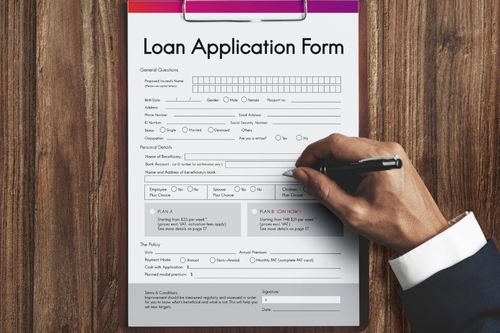Table of Contents
- 5 steps to follow when applying for an education loan
- Examine the course and university thoroughly
- Check eligibility
- Monitor loan amounts and policies
- Education Loan Interest rates and bans
- Regularly reviewing financial assistance programs
- How to apply for an education loan to study abroad?
- Key takeaways
- FAQs
Higher education at world-class universities in other countries is an expensive endeavor. Fees and other expenses are frequently a concern for international students. However, it should not bother them too much because many abroad education loans are available to meet the budget needs of students from various economic backgrounds. A degree from your dream university can provide you with a golden career and help you repay the loan in the future.
For more detailed information on education loan for study abroad without collateral, you can refer to this article. This blog will discuss 5 steps to help you sort out the formalities for your abroad education loan.
5 steps to follow when applying for an education loan
Follow these steps before applying for an education loan to kick-start your study abroad adventure. Consider them as tips for obtaining an abroad education loan.
Examine the course and university thoroughly
The first of five things to remember when applying for an abroad education loan is that the student must be certain about the subject and the university before applying for a loan. Borrowing money for studies may go to waste if you are unclear about the course and university. Many students are unsure about their decision and later come to regret it. It can also be difficult to repay if you don’t find a job in time. As a result, it is essential to seek appropriate guidance and fully understand the courses offered by universities.
Check eligibility

The second most important consideration is that a student must be a citizen or resident of the country where they wish to borrow money from a bank or other financial institution. To be eligible for the loan, the student must be over the age of 18. There is an expectation from students to have an outstanding academic record and solid proof of university admission. Banks are the most popular sources that offer student loans. The loan is given to the student rather than the student’s parents or family members. Hence, it will be the student’s responsibility to repay it. Public banks cover almost 90% of the total cost.
Monitor loan amounts and policies
When borrowing an abroad education loan, always keep an eye on the loan amount and the policies that come with it. Different policies apply to different principal amounts borrowed from banks. For example, students must be aware that an education loan for studies abroad of up to INR 4 lakhs is available without collateral and that for amounts between INR 4 lakhs and 7.5 lakhs, a co-applicant is required. If the loan amount exceeds INR 7.5 lakhs, the rules and student loan interest rate may be applied after the borrower provides collateral.
Education Loan Interest rates and bans
Moving on to our list of 5 things to remember when getting an education loan, our next pro-tip is always carefully considering interest rates and moratoriums. Student loan interest rates, moratorium period, late payment fees, and other financial aspects. The most common interest rate ranges from 9 to 15%. This is mostly due to compound interest, meaning repayment amounts can rise over time. However, students should know that banks provide short-term and long-term repayment plans for abroad education loans. Students should also select a bank with a long moratorium period.
Banks sanction loans with longer repayment terms in larger amounts. Longer repayment periods benefit students because it takes time for them to begin repaying by getting a job. Instead of taking the entire loan at once, students must take the amount in installments for their expenses each semester.
Regularly reviewing financial assistance programs
The final pro tip is regularly checking finance-aid schemes offered by various universities and the government.
For example, the Indian government has launched the Credit Guarantee Fund Scheme, also known as CGFSEL, to allow students to obtain loans of up to Rs.7.5 lakhs without needing co-applicants.
Similarly, the Indian Bank Association Model Scheme allows students to borrow up to Rs. 20 lakh for higher education in another country. Many prestigious and renowned universities worldwide have their own funding systems or study-abroad scholarship schemes to assist and attract international students with their educational expenses. The universities also provide meritorious students with financial assistance.
How to apply for an education loan to study abroad?

The loan process takes time, from loan application to approval and disbursement, so you should always apply for a loan a little early.
To apply for a student loan, follow these steps
- Check to see if the banks recognize the course you intend to take.
- Determine how much loan you will require and how much you will arrange.
- Compare the student loans various banks offer for studying abroad and choose the one that best meets your needs.
- Fill out the loan application form and visit your bank after you’ve decided on a bank and a loan amount.
- The bank will issue a loan document outlining the loan terms when your loan is approved.
- Following the signing of the loan agreement, the bank will disburse the funds in installments or as requested by the university.
Key takeaways
- Higher education at world-class universities abroad can be expensive. Fees and other expenses concern international students. However, students from various economic backgrounds can opt for educational loans to meet their needs.
- A degree from a top university can help you be successful in your career and help you repay the loan in the future. So applying for an abroad education loan to get admission to such a university is worth your effort.
- You must examine the course fee, check educational loan eligibility, monitor loan amounts and policies, and review financial assistance programs to acquire an education loan successfully.
Did you find this blog informative? If so, please share your thoughts in the comments section below. Click here to contact us for more information on education loan for studies abroad. We would be happy to assist you with your queries.
Liked this blog? Read next: How to get an Education Loan to Study Abroad in India in 2024
FAQs
Q1. How do I repay my educational loan?
Ans- Follow these steps to repay your education loan-
- Select the best repayment plan.
- Choose a loan with a shorter repayment period.
- Set up recurring payments.
- During the moratorium, pay off any outstanding interest.
- Make additional payments on your loan.
Q2. Can we get a non-collateral education loan to study abroad?
Ans- Yes, many banks provide an education loan abroad without collateral.
Q3. Can I study abroad on 100% loan?
Ans- Yes, education loans cover the entire cost of education. However, a student can get full coverage for expenses up to a certain amount.
Q4. Can I get a student loan for studying abroad?
Ans- Yes, many banks and financial institutions offer student loans specifically for studying abroad. These loans cover tuition fees, living expenses, and other educational costs.
Q5. Who is eligible for an education loan?
Ans- Students over the age of 18, with a good academic record and confirmed admission to a recognized university abroad, are eligible for an education loan.
Q6. How to get education loan after 12th?
Ans- To get an education loan after 12th, you need to:
- Secure admission to a recognized university.
- Check eligibility criteria and documentation requirements.
- Apply to banks offering educational loans for undergraduate studies.
- Provide necessary documents, such as proof of admission, academic records, and identity proof.







